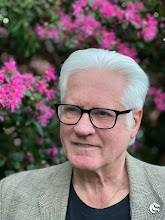I've just finished reading Erle Cox's classic science fiction novel Out of the Silence (first published in serial form 1919) for at least the third time. It pays multiple readings, and it's good to see a new edition as part 6 of the Classic Australian SF series from Chimaera Publications.
Van Ikin, Sean McMullen and I discussed Out of the Silence at length in our 1999 book, Strange Constellations: A History of Australian Science Fiction (Greenwood Press), and there is little that I'd want to add to that discussion. As we say there, it's a complex, intricately-patterned novel, but its most troubling aspect is its racial element.
Just briefly, the novel is set in rural Victoria, where gentleman farmerAlan Dundas, a former barrister who has settled down to growing grapes, accidentally discovers a huge sphere of impervious metal, buried beneath his property. It contains, among other wonders, the body of a beautiful woman, Earani, who is from an earlier species of humanity and has lain in suspended animation for 27 million years, waiting to be revived.
Earani possesses a superhuman intellect and extraordinary powers that range from telepathy to teleportation. Alan falls madly, blindly in love with her, and joins in her plan to revive the even more formidable Andax, sleeping in another such sphere high in the Himalayas, and to create a racially-cleansed worldwide utopia. For all his good qualities, Alan is utterly entranced by Earani's beauty ... and we, too, are made to see her alluring side and her penetrating insight into the various people she meets. However, we are also led to view her as monstrous and to sympathise with those characters who seek to stop her, notably Alan's friend Richard Barry and the local woman who loves him, Marian Seymour.
In Strange Constellations, we say:
What is dated and disturbing about the book, is the way it appears to take Earani’s race-based thinking seriously. The novel’s rejection of her racist philosophy has to be earned through layers of double irony and complex narrative. Although readers are invited to be disgusted by Earani's bland account of cold-blooded genocide, they are invited to agree with the simplistic logic of some of the points she makes in the debate. Earani and Andax may be figures of wonder, but they are also figures of pitiless ultra-rational evil. As well as being beautiful and exotic (the standard attributes of the fictional heroine at this time), Earani is a cogent advocate of her philosophy and a vigorous defender of the merits of her society, and seems intellectually superior to many of the 20th-century humans with whom she comes into contact.
Inevitably, Out of the Silence is dated in other ways. To take just one example, Earani's civilisation is shown to have possessed incredible technology, including weapons of mass destruction on a grand scale, but we are supposed to be awed at its possession of air vehicles capable of travelling at ... 300 miles per hour. But the book is a splendid synthesis of themes from earlier Australian science fiction (or its precursors such as race-based political thrillers and lost-world utopias). At least until the 1940s, it stood as the leading Australian contribution to what was crystallising into what we now think of as the science fiction genre, and it still deserves a wide audience in its own country, albeit an audience informed by almost another century of historical experience with the perils of race-based thinking.

3 comments:
but we are supposed to be awed at its possession of air vehicles capable of travelling at ... 300 miles per hour.
I for one am awed by the average commute speed of about 5 miles per hour for those foolish enough or forced to drive into work (at least in our fair city of Toronto).
In 1925 (first publication) 300 miles an hour would have awed many.
I, for one, struggled through the detailed description of Alan working his way through the chambers of the sphere. However, not one to surrender, I read on and am very glad I did.
It is indeed a complex and chilling novel.
There is much relevance to today's world - environmental degradation and the possible outcomes for humanity because of that. It was also interesting to read that 27 million years ago, men (Andax) were calling the shots, with the same chaotic outcomes that our world suffers today.
Despite not being a SC fanI consider it worth the read!
In 1925 (first publication) 300 miles an hour would have awed many.
I, for one, struggled through the detailed description of Alan working his way through the chambers of the sphere. However, not one to surrender, I read on and am very glad I did.
It is indeed a complex and chilling novel.
There is much relevance to today's world - environmental degradation and the possible outcomes for humanity because of that. It was also interesting to read that 27 million years ago, men (Andax) were calling the shots, with the same chaotic outcomes that our world suffers today.
Despite not normally being a SC fan I consider it worth the read!
Post a Comment